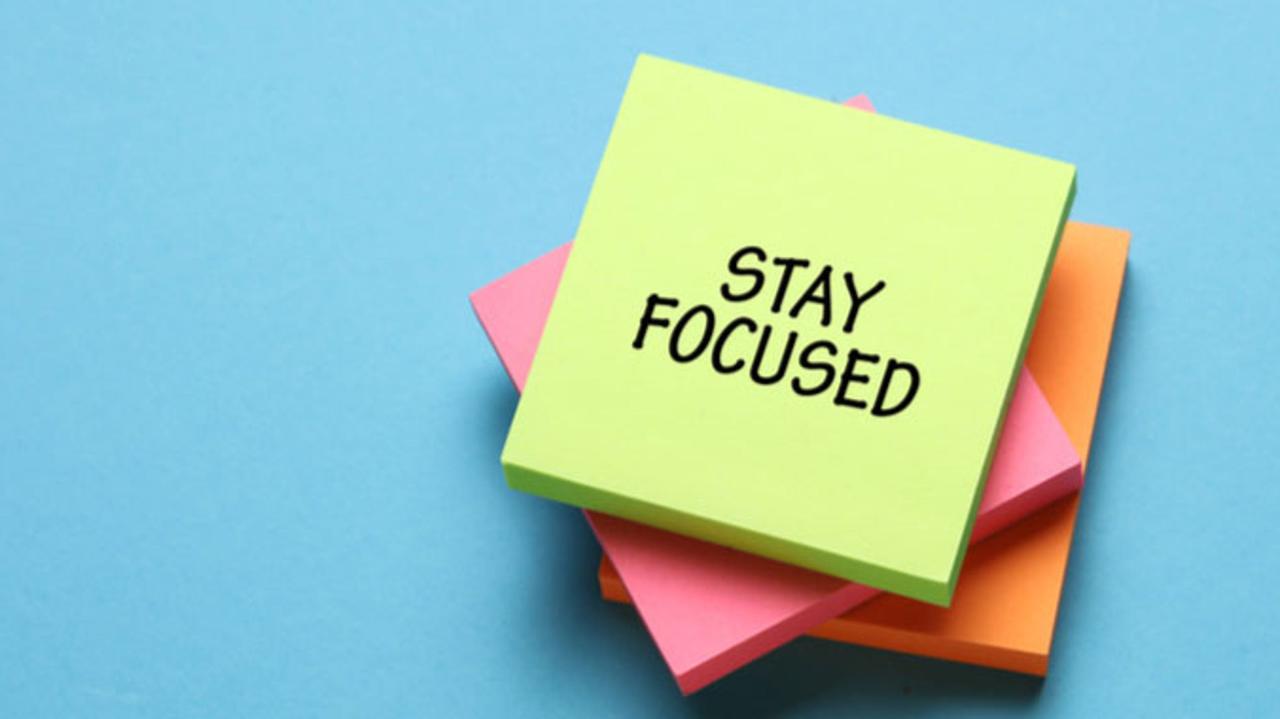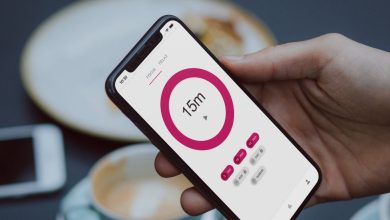Fast Peak Concentration Unlocked

In the contemporary landscape of professional and personal pursuits, the ability to focus intensely and sustain that focus over time has become the ultimate competitive advantage. Yet, in our hyper-connected, notification-driven world, achieving a state of deep, unwavering concentration feels increasingly elusive. We are constantly bombarded by digital pings, the allure of social media, the demands of multitasking, and an endless stream of information, all conspiring to fragment our attention and diminish our cognitive reserves. The result is often a feeling of being busy but unproductive, overwhelmed, and unable to engage fully with the tasks that truly matter.
However, the capacity to Unlock Peak Concentration Fast is not an innate talent reserved for a select few; it is a trainable skill, a set of techniques, and a disciplined approach that can be cultivated by anyone. This isn’t about magical quick fixes, but about strategically priming your brain and environment to swiftly enter a state of high-level focus, even when time is short or distractions loom. By understanding the neuroscience behind concentration and applying targeted interventions, you can dramatically reduce the friction involved in switching from scattered attention to laser-like focus, making every minute of your dedicated work time significantly more impactful.
This comprehensive guide will delve deep into the psychological and physiological mechanisms of concentration, detail a wide array of actionable strategies for rapidly entering and sustaining peak focus, and offer practical advice for integrating these techniques into your daily professional and personal life. By the end of this article, you will possess the insights and tools to systematically reduce mental clutter, prime your brain for intense focus, and consistently Unlock Peak Concentration Fast, thereby enhancing your productivity, creativity, and overall cognitive performance to unprecedented levels.
The Science of Focus

To effectively unlock peak concentration, it’s essential to understand what concentration is from a scientific perspective and what hinders it.
A. Attention as a Limited Resource
Our capacity for sustained, focused attention is finite. It’s like a mental spotlight; we can direct it intensely for a period, but it can get tired or be easily pulled away.
B. The Prefrontal Cortex’s Role
The prefrontal cortex, the “CEO of the brain,” is responsible for executive functions like planning, decision-making, working memory, and sustained attention. When distracted, this area struggles, leading to reduced performance.
C. The Impact of Dopamine and Novelty
Our brains are wired for novelty. Digital notifications trigger a dopamine release, creating a “reward prediction error” that makes us constantly seek new information, pulling attention away from deeper tasks.
D. Inhibition Control
Concentration requires strong inhibition control – the ability to suppress irrelevant thoughts and external stimuli. Distractions weaken this control, making focus harder.
E. Flow State: The Pinnacle of Concentration
The “flow state,” where one is fully immersed in an activity, losing track of time and self-consciousness, is the ultimate expression of peak concentration. Achieving this state is a goal of many focus techniques.
Pre-Concentration Priming
Before you even begin a task, there are powerful pre-concentration rituals and environmental adjustments you can make to quickly prime your brain for deep work.
A. Environmental Orchestration: Design for Deep Work
Your physical space significantly influences your ability to concentrate.
- A. Clear Your Workspace: A tidy physical desk reduces visual clutter, which can subconsciously distract your brain. Only keep essential tools within reach.
- B. Control Auditory Input:
- Noise-Canceling Headphones: Indispensable for blocking ambient noise, especially in open or busy environments.
- Focus Music/Ambient Sound: Use instrumental music (baroque, classical, lo-fi beats) or ambient sounds (nature sounds, white noise) to create a consistent, non-distracting auditory environment that helps mask interruptions.
- C. Optimize Lighting and Temperature: Ensure comfortable lighting (natural light is best) and a comfortable room temperature. Physical discomfort is a subtle but potent distraction.
B. Digital Detox Rituals: Silencing the Digital Siren Song
Your digital environment is the biggest source of modern distractions.
- A. Aggressive Notification Pruning: Turn off all non-essential notifications on your phone, computer, and wearables. Only allow critical, time-sensitive alerts, or set them to “silent.”
- B. Activate “Do Not Disturb” / “Focus Modes”: Utilize your device’s built-in focus modes, scheduling them for your dedicated work blocks to automatically silence all interruptions.
- C. Website and App Blockers: Use browser extensions or standalone applications (e.g., Freedom, Cold Turkey, StayFocusd) to block access to distracting websites (social media, news) and apps during focus sessions.
- D. Close Unnecessary Tabs and Applications: Before starting, close all browser tabs and applications not directly relevant to your current task.
- E. Physical Phone Separation: Place your smartphone in a different room, a drawer, or at least out of your immediate line of sight and reach.
C. Mental Warm-up & Clarity: Preparing Your Brain
Just as an athlete warms up, your brain benefits from pre-focus exercises.
- A. Brain Dump: Spend 2-3 minutes quickly writing down every thought, worry, or uncompleted task swirling in your head. This clears mental clutter, allowing you to “park” distractions for later.
- B. Define Your Single Most Important Task (MIT): Clearly identify the one task you will focus on during your session. Write it down. This provides a clear target for your attention.
- C. Outline the First 5 Minutes: For a large task, spend 1 minute quickly outlining just the very first few steps or actions you’ll take. This reduces initiation friction.
- D. Deep Breathing Exercise: Take 3-5 slow, deep breaths. This calms your nervous system, reduces anxiety, and brings your mind to the present moment.
Rapid Concentration Techniques
Once the stage is set, these techniques help you rapidly enter and sustain a state of peak concentration.
A. The “Start Strong” Method
Don’t ease into it; launch directly into your task.
- A. The Pomodoro Technique (Modified): Commit to 25 minutes of absolute, uninterrupted focus on a single task, followed by a 5-minute break. The short, defined interval makes it less daunting to start.
- B. “Time Box” Intensity: For a truly urgent task, allocate a very short, intense timebox (e.g., 15 minutes) and promise yourself that you will work on nothing else during that time. The constraint can be a powerful motivator.
B. Anchoring and Ritualization
Create triggers that automatically signal to your brain that it’s time to focus.
- A. The “Focus Mode” Ritual: Combine several priming steps (e.g., put on headphones, open specific software, take a deep breath) into a consistent ritual before every deep work session. This creates a powerful mental anchor.
- B. Specific Location/Posture: If possible, associate a particular chair, desk, or even posture with deep work. Your brain will begin to link these physical cues with intense concentration.
C. Minimizing Cognitive Friction
Reduce any obstacles that make starting or continuing difficult.
- A. Pre-Gather Materials: Before starting, ensure all necessary documents, links, and tools are open and ready. Eliminate reasons to get up or open new tabs.
- B. Clear Distractions Immediately: If a distracting thought or external interruption arises, quickly address it (e.g., jot down the thought on your brain dump pad) and immediately return to your task, rather than dwelling on it.
D. Leveraging Intentional Breaks
Breaks are not distractions; they are crucial for sustained focus.
- A. Micro-Breaks: During your short Pomodoro breaks, do something completely different: stretch, walk to get water, look out a window. Avoid checking your phone.
- B. Scheduled Longer Breaks: Plan longer breaks or periods of rest to allow your mind to fully recuperate, preventing decision fatigue and burnout. This makes your focus sessions more effective.
E. Mindfulness and Return to Task
When your mind inevitably wanders, gently bring it back.
- A. “Just Notice” Technique: When you catch your mind drifting, simply acknowledge the thought without judgment (“Ah, I’m thinking about X”) and then gently redirect your attention back to your task. Don’t beat yourself up; just return.
- B. Focus on the Process, Not Just the Outcome: Immerse yourself in the doing of the task—the specific steps, the current sentence, the next line of code—rather than worrying about the entire project.
Cultivating a Lifestyle of Peak Concentration

While fast concentration is useful, building it as a consistent trait requires long-term habits.A. Prioritize Sleep: Lack of sleep severely impairs focus, memory, and cognitive performance. Aim for 7-9 hours of quality sleep nightly.
B. Regular Physical Exercise: Physical activity improves blood flow to the brain, enhances cognitive function, and reduces stress, all of which contribute to better concentration.
C. Mindful Eating and Hydration: A balanced diet and adequate hydration are crucial for brain health and sustained energy levels. Avoid sugary snacks that cause energy crashes.
D. Practice Mindfulness and Meditation: Regular meditation trains your attention muscle, improving your ability to stay present and less susceptible to internal and external distractions.
E. Limit Multitasking (Even Small Ones): Consciously try to single-task throughout your day, even with seemingly trivial actions. This rewires your brain for deeper focus.
F. Digital Detoxes: Implement regular periods of complete digital disconnection (e.g., no phone after 8 PM, a weekend without social media). This resets your attention span.
G. Periodic Review of Your Focus System: Regularly assess what’s working and what’s still challenging. Are new distractions emerging? Are your tools and rituals still effective? Adapt as needed.
Conclusion
In an era defined by relentless digital noise and pervasive demands on our attention, the ability to Unlock Peak Concentration Fast is no longer a mere productivity hack; it is a critical skill, a competitive advantage, and a pathway to reclaiming intellectual autonomy. This guide has illuminated the profound truth that intense focus is not a mystical talent but a trainable muscle, one that can be consistently strengthened through intentional preparation, strategic techniques, and a disciplined approach to our cognitive environment.
By systematically understanding the scientific underpinnings of attention and applying targeted pre-concentration priming strategies—from orchestrating a distraction-free physical space and implementing rigorous digital detox rituals to performing mental warm-ups—we create an optimal foundation for rapid immersion. These foundational steps, coupled with dynamic concentration techniques like the modified Pomodoro, strategic anchoring, and meticulous cognitive friction reduction, empower us to swiftly transition from states of scattered attention to laser-like focus, ensuring that every moment dedicated to a task is maximally productive and impactful.
The cumulative benefits of cultivating this skill are transformative: a dramatic surge in the quality and quantity of your output, accelerated skill acquisition, a significant reduction in stress and decision fatigue, and a profound sense of control over your cognitive landscape. Ultimately, by mastering the art of unlocking peak concentration, you are not merely enhancing your productivity; you are investing in your mental clarity, fostering deeper creativity, and building a more resilient, intentional self capable of navigating the complexities of the modern world with grace, precision, and profound effectiveness. It is the ultimate investment in your intellectual capital and overall well-being.



